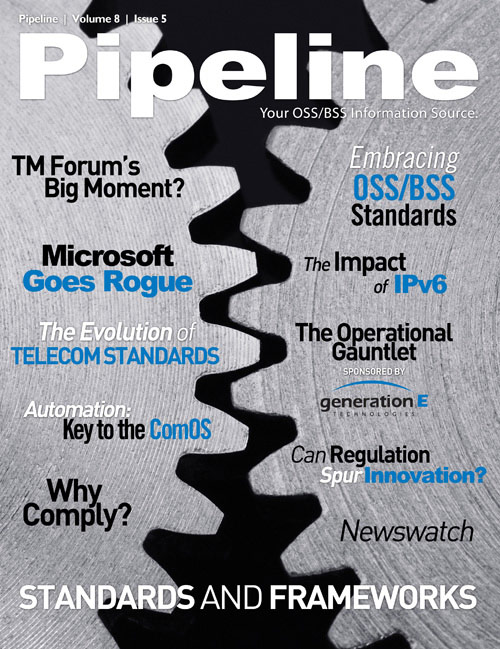By: Jesse Cryderman

Navigating the world of telecom standards is like swimming in a sea of alpha-numeric soup. Misread a letter and you could be talking about streaming-video QoS metrics instead of VoIP protocol. Indulge in a cursory swim through this sea, however, and eventually some acronyms pop up more frequently than others. Beyond signifying the iteration of a standard in its historical hierarchy (OC-768 logically offers more bandwidth than OC-48), standards enable interoperability, ensure regulatory compliance, actuate security measures, and are often times crucial components of a proposal.
Seen another way, if the myriad bits of data speeding around the globe are like words, and operating systems and networks are like word aggregators, standards are like grammar and syntax of an über-language. They allow devices of all sorts to communicate with each other in a manner that is geographically and culturally agnostic. Hidden within the incremental lineage of NATDTT, for example, are rules that facilitate the interoperability that we have come to expect in the digitally connected age.
Standards are also big business.
In general, the companies who have the most to gain (or lose) are the most engaged with the standards bodies. So vendors and carriers with the most diversified business models generally have a presence on a wide spectrum of standards bodies. In consumer video, Sony lost with BetaMax, but determined not to lose the video format war a second time, drove loss-leader promotions on the Blu-Ray-equipped Playstation 3 and paid $50,000 to be a member of the Blu Ray Disc Association. In telecom, the competing 4G standards are WiMAX and LTE, but the shrinking size of the WiMAX forum and recent news from Sprint and Clear regarding LTE build-outs paints a bleak future for the WiMAX standard and the vendor companies invested in the network components and devices that comprise the WiMAX ecosystem. In wireless IP networking, the Institute for Electrical and Electronics Engineers (IEEE) decided to embrace 802.11i instead of WAPI for WLAN encryption—bad news for router manufacturers who posed WAPI as their on-board security protocols.
As we'll see, standards actuate the future and speed of interconnectivity and as such play a major role in shaping our industry. Since there are a massive number of standards, we could quickly fall down a rabbit hole of chronicling standards revisions, the process of standardization for SIP, etc. so it's important to define our scope. This article is not a reference catalog of every standard in existence; for one, this piece would rapidly become a titanic tome. Secondly, such documents and online indices are already in existence (http://tsk.telcordia.com/tsk/index.cfm). The list won't be exhaustive, but what it will do is provide some high-level clarity around which standards are most important in telecom today and who is compliant.
While there are many groups advocating innumerable standards and competing to drive standard adoption, a closer look at the landscape reveals what vendors and carriers really think about standards compliance.










